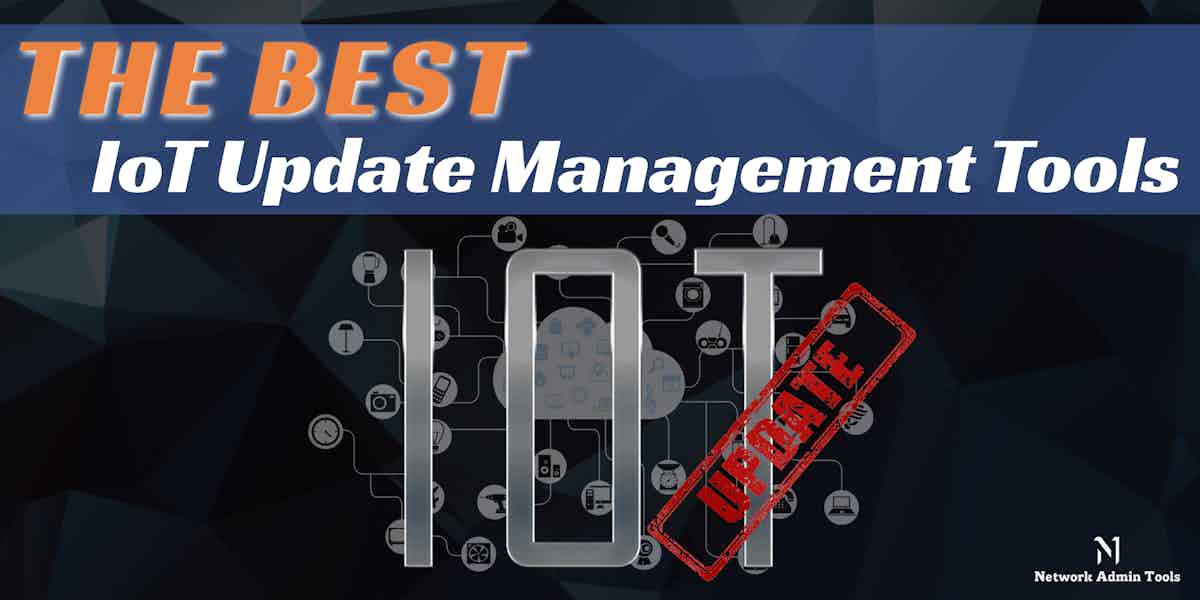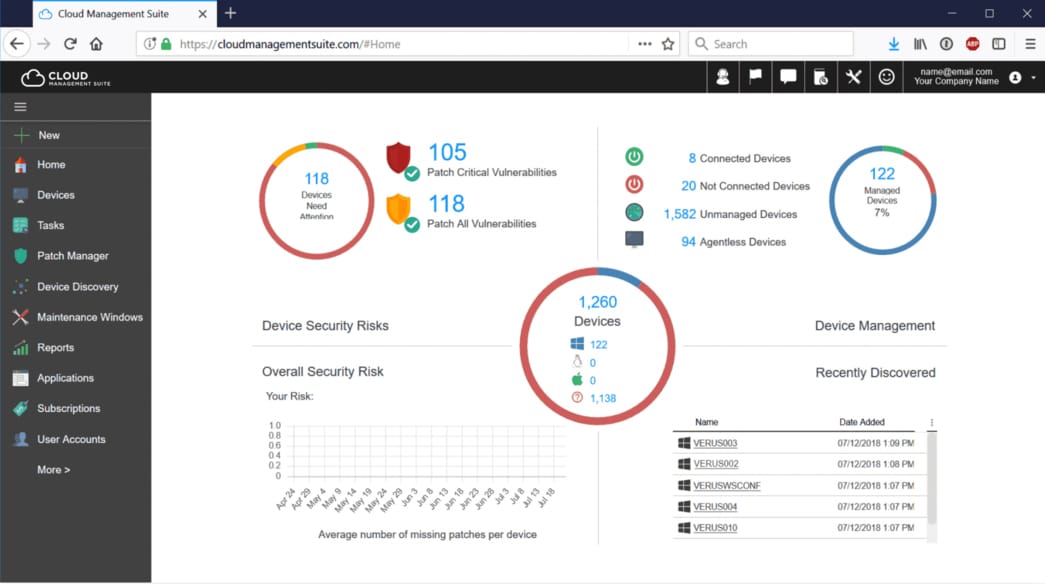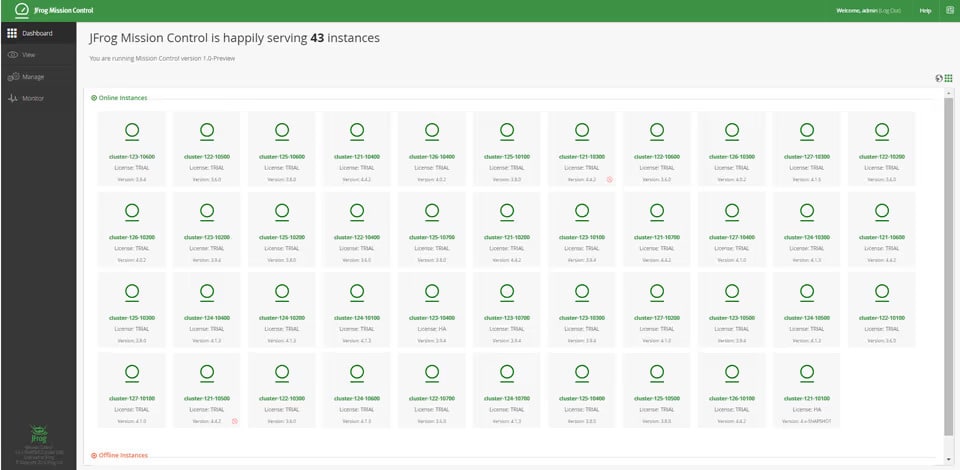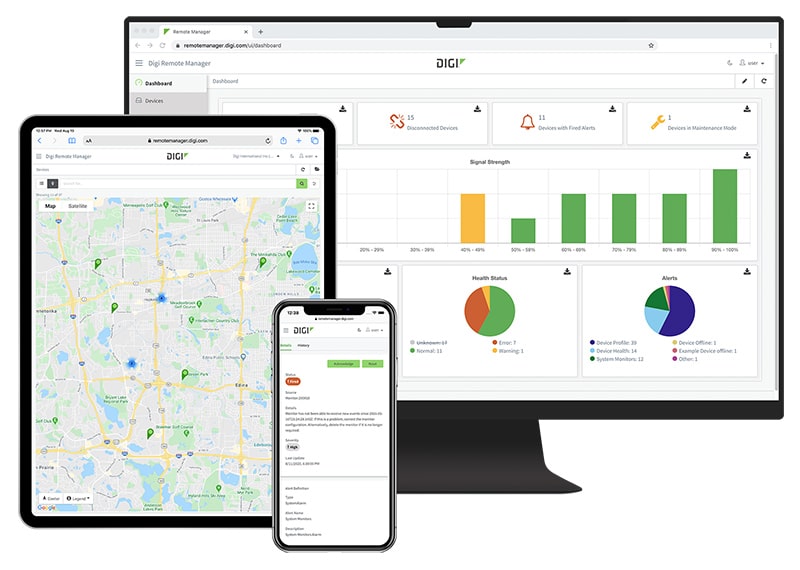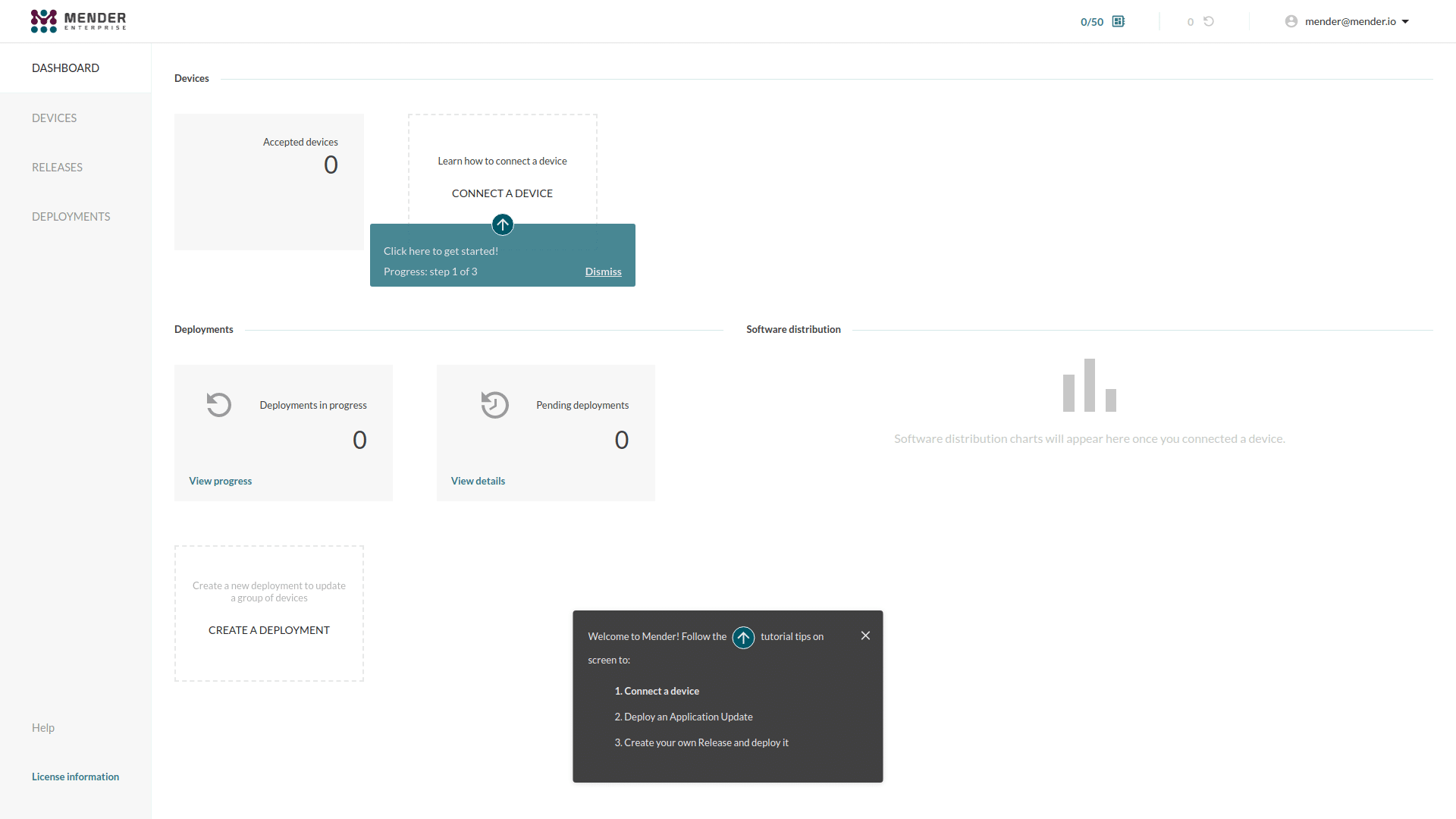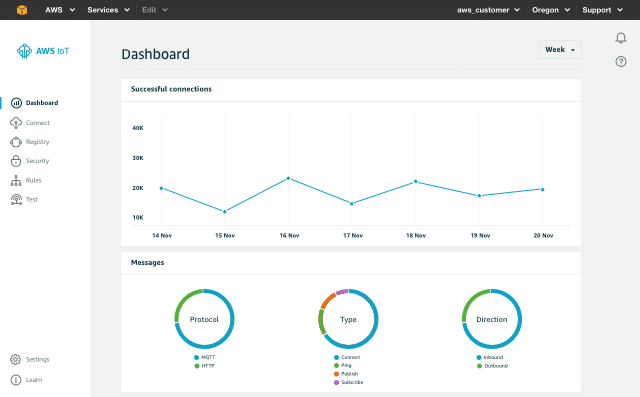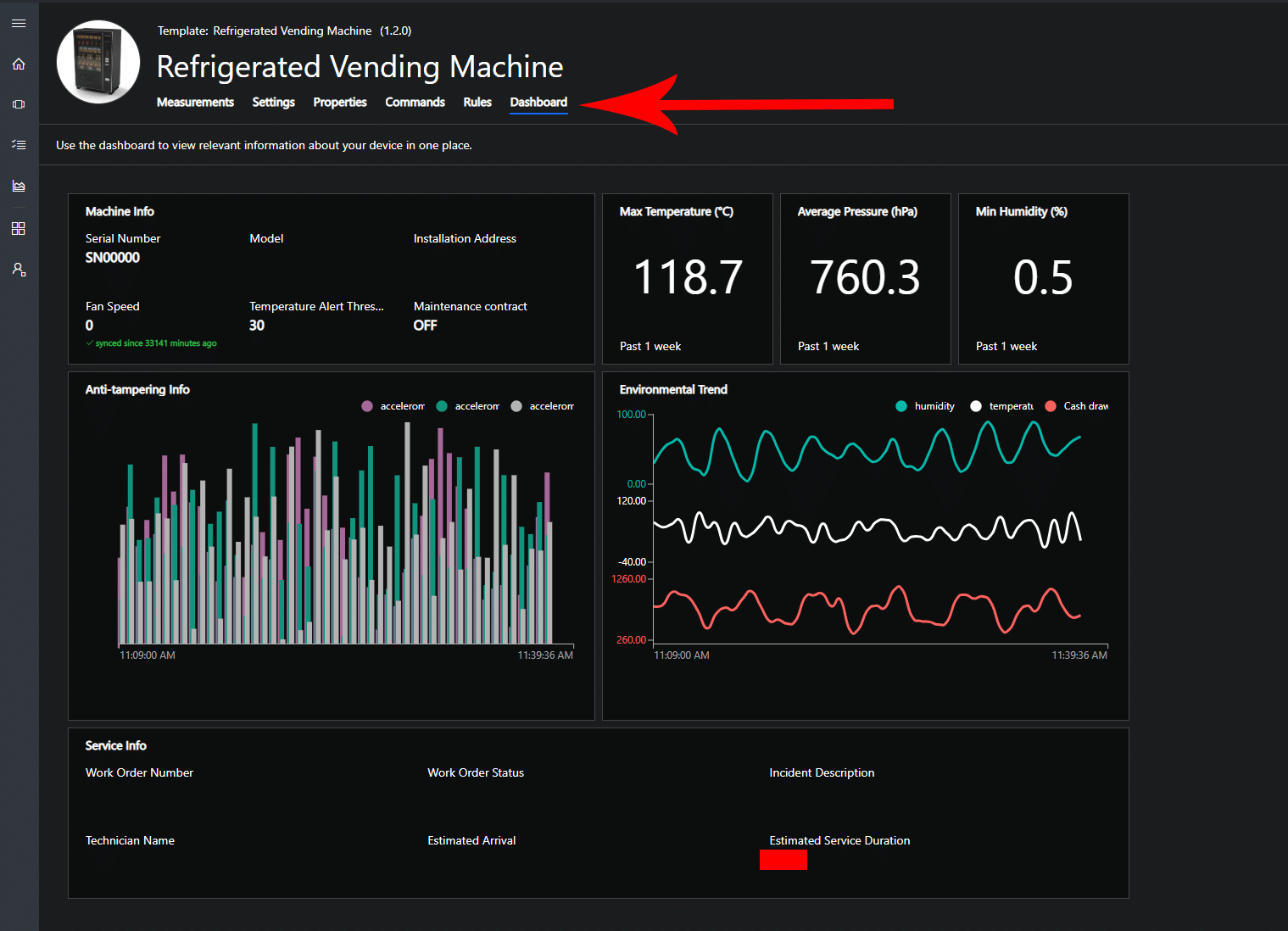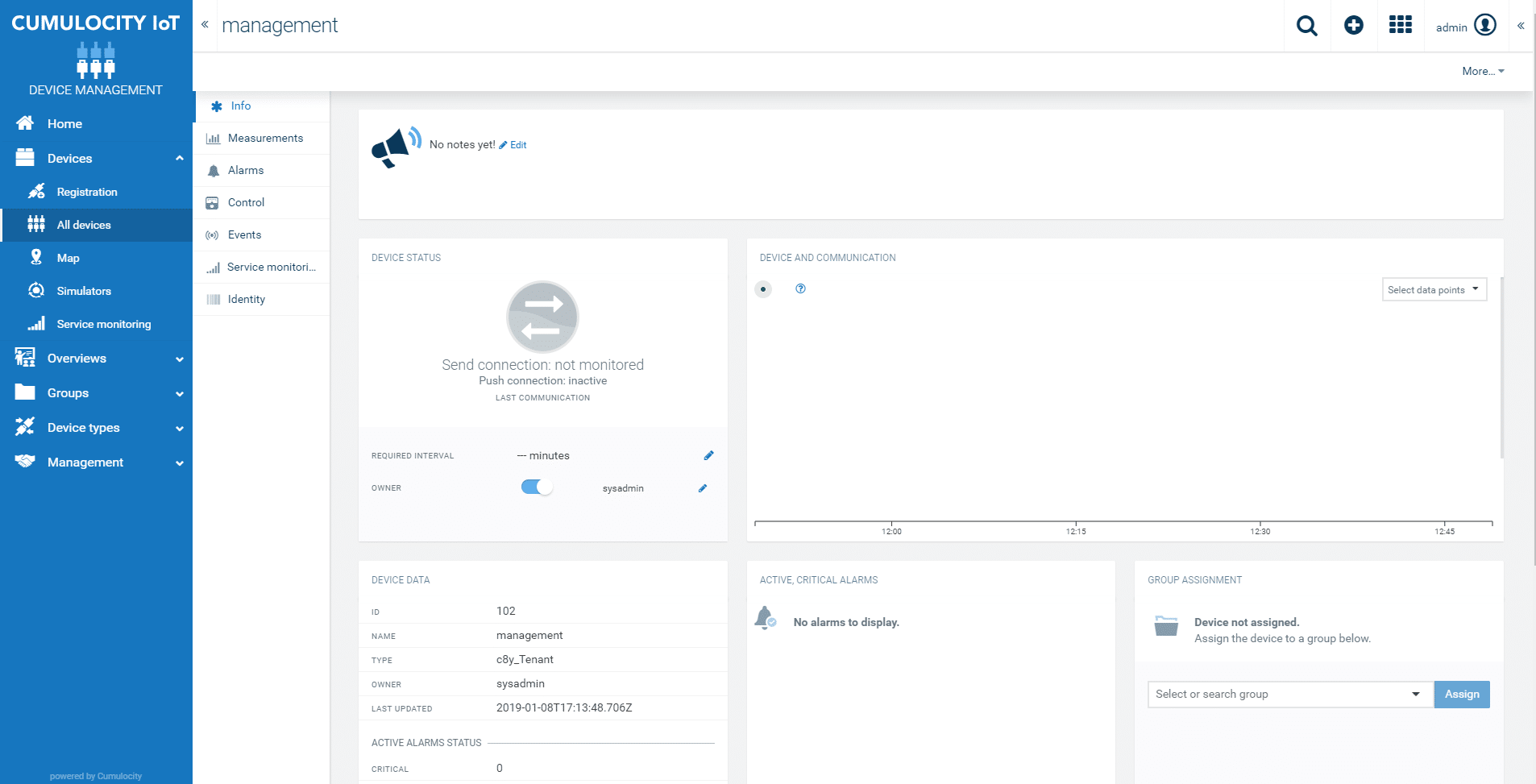IoT stands for the Internet of Things, a system of interrelated devices and digital machines with unique identifiers (UIDs) that aid in the quick transfer of data over the network. Today, many organizations use IoT devices to deliver better customer service, enhance productivity, and improve decision-making. IoT is a collection of smart devices that involves the use of processors, sensors, and hardware to collect and share data. We will discuss the benefits of managing software updates in IoT devices and some of the best IoT update management tools available today.
Here is our list of the best IoT update management tools:
- Syxsense (EDITOR’S CHOICE) – Cloud-based IoT update management platform, excelling in centralized device management, advanced security features, and compatibility with Windows, Mac, and Linux. Ideal for MSPs and IT professionals for real-time threat detection and comprehensive IoT device management.
- JFrog Connect – Excels in real-time IoT device monitoring and security, with strong deployment capabilities for Linux and IoT devices.
- DIGI Remote Manager – Offers robust network and IoT device management with a focus on automation and security, ideal for complex IoT network needs.
- Mender – Open-source, secure IoT update management tool known for its security features and scalability, suitable for developers.
- AWS IoT Device Management – Scalable solution for large-scale IoT device management, integrating well within the AWS ecosystem, offering advanced features.
- Azure IoT Central – Enables rapid IoT solution development and integration with existing business systems, ideal for quick scalability without extensive tech expertise.
- Telit IoT Platform – A reliable platform for building secure IoT solutions, with easy integration and data management, suitable for businesses of all sizes.
- Cumulocity IoT – Specializes in mobile network IoT device management, offering comprehensive management and troubleshooting features.
Mobile devices, desktops, sensors are all part of the Internet of Things as long as they are connecting and sharing data over a network. Businesses are switching and adopting IoT practices for labor reduction, performance monitoring, better analysis and insights, process automation, and delivering smart working with more control. However, they also involve various security challenges. With more sharing of data over the network, security concerns increase as any bug in a single application/device may affect the entire system.
Experts have also predicted that despite so many security concerns, the IoT is going to boom over the years. Some people believe they are connected with limited smart devices. Still, over time you will need tools for IoT device management.
What is IoT Update Management?
IoT Update Management Platforms enable businesses to manage multiple connected devices remotely over the network. They entail provisioning and authentication of IoT devices for better security and to keep the attackers away from your smart devices. They also provide advanced features to manage the entire network of devices.
Businesses can easily collect data, generate insightful reports, perform real-time monitoring, conduct over-the-air (OTA) software deployments, and more using these powerful IoT Update Management Platforms.
The main purpose of using these platforms is they help in remote configuration and management of IoT devices, and enable scalability. Furthermore, they reduce the resources essential for manual management. There are various benefits of incorporating IoT Update Management Platforms.
There can be a large number of IoT devices connected to a single system. It also enhances the security concerns as if the cybercriminals attack one system, then all the connected IoT devices will face the impact. Thus, to maintain the security of your devices and systems, it is best to invest in these tools to accelerate your business performance, discover and fix bugs, and patch security issues.
Key Features:
- Remote troubleshooting
- Error Handling
- Patch Security Holes
- Monitoring IoT devices
- Configuration of IoT devices
- Device Health Diagnosis
- Monitors usage and Performance Metrics
Importance of Managing Software Updates in IoT Devices
Various industries and businesses are using IoT devices that raise the demand for IoT device management tools for better monitoring and security. Be it transportation, energy, manufacturing, or other industrial areas, many businesses are relying on a potent IoT ecosystem for better performance and results. The software used for these systems must be timely updated throughout the product lifetime for better outcomes.
The real-time software updates help in discovering bugs that generate as the software grows. With timely updates, businesses can effectively perform operations and produce better customer values. Also, it helps reduce operational risks and other critical challenges.
With a single click on maintenance updating, you can keep all your IoT devices up-to-date and safe. It can also help save time, costs, and energy.
With the increase in cybersecurity challenges, it is best to have software that regularly updates and fixes bugs and errors before any damage. With regular software updates, you can always stay ahead of your competitors, improve your performance, and deliver quality results.
The Best IoT Update Management Tools
Every new device added to the IoT system requires efforts to manage and troubleshoot issues. As an ever-increasing number of devices are getting connected to the ecosystem, there is a need for a separate tailored platform to manage, monitor, and track these IoT fleets. The management platforms can vary in functioning but aim to deliver secure and quality results.
Our Methodology for Selecting the Best IoT Update Management Tools
With the number of IoT devices and applications increasing, it is becoming increasingly important to have an effective way to manage updates for these devices. The right IoT update management tools can help keep your devices up to date with the latest security patches and software updates. But how do you know which tool is best for your needs?
- Tool offers scalability and security features as well as is easy to use.
- Supports automation and offers endpoint security
- A console that displays a list of every device’s firmware updates
- Offers a service that copies and saves patch installations.
To eliminate the threat and easy management of IoT fleets, we have listed a few top IoT Update Management Tools that can help accelerate your performance. Compare the below-listed platforms on the basis of their features and functionalities.
1. Syxsense
Syxsense is a cloud-based IoT update management platform designed for managed service providers (MSPs) and IT professionals to prevent threats and scan vulnerabilities. It comprises various advanced features, including third-party patching, team collaboration, Network Device Map solutions, Two-Factor Authentication, and more to protect IoT devices at all times.
Key Features:
- Centralized IoT device management solution for tracking devices
- Network Device Map solutions
- Remote Desktop Access
- Provides endpoint security
- Software Distribution
- Remote Control
- Automated IoT Management
- Allows users to view anything new added to the networks in the console
- Alerts and notifications
- Two-Factor Authentication
- Audit Management
- Asset Discovery
- Compliance Tracking
- Configuration Management
- Approval Process Control
- Inventory History
- Server Patch Management
- Third-Party Patch Management
- Manages risk exposure
- Effective patch management solution
- Compatible with Windows, Mac, and Linux
- Supports security patches, software updates, and feature upgrades to keep users up-to-date at all times
- Vulnerability Scanner
- Patching for Legacy OS
- Patching for Virtual machines
Why do we recommend it?
We recommend Syxsense for its comprehensive feature set that not only includes advanced security measures but also facilitates team collaboration and network mapping. Its cloud-based architecture allows for seamless IoT device management, making it one of the most versatile platforms in the category.
Furthermore, their products and tools enable users to keep their desktops, laptops, and servers up-to-date with the latest security features.
Syxsense is ideal for both SMB and large enterprises giving an overview of networks to analyze, predict and detect threats in real-time. Using the dashboard, users can view and ensure all endpoints are secure within your environment. It also provides the location of your devices on a network map and Alert Monitors.
Who is it recommended for?
Syxsense is ideal for Managed Service Providers (MSPs) and IT professionals working in both small and large enterprises. Its robust features like vulnerability scanning, third-party patching, and real-time threat detection make it particularly useful for organizations looking to enhance their cybersecurity infrastructure. With compatibility across multiple operating systems, it also suits environments that use a mix of Windows, Mac, and Linux.
Pros:
- Scans vulnerabilities and uses the latest security features to protect and keep devices and servers up-to-date
- Offers team collaborations and third-party patching features
- The network map feature helps in locating the current position of devices
- Performs in-depth network analysis and detects threats in real-time
- The dashboard helps users view and monitor devices, discover new devices as well as manage risk exposure
Cons:
- A separate module contains a security monitoring feature
- Requires better documentation
EDITOR'S CHOICE
Syxsense is our top choice for IoT update management, particularly for its comprehensive and advanced feature set. This cloud-based platform excels in providing a centralized solution for IoT device management, offering features like Network Device Map solutions, Remote Desktop Access, and Two-Factor Authentication.
The intuitive interface and robust security measures make it especially appealing for both small and large enterprises. Its compatibility with various operating systems and effective patch management solutions are significant advantages. Syxsense truly stands out in its ability to provide real-time network analysis and threat detection, making it a superior choice for Managed Service Providers (MSPs) and IT professionals.
Download: Download a 14-Day Free Trial
Official Site: https://www.syxsense.com/
OS: Windows, Mac, Linux
2. JFrog Connect
JFrog Connect is a leading tool that helps control, monitor, and secure all IoT devices with a single click. Connecting with any type of Linux or IoT device is much easier and quick with JFrog Connect. It is an all-in-one device management platform with various advanced features that make it a top choice.
Key Features:
- Monitors all IoT devices at scale with a click
- Quick to connect with IoT devices
- Agile and easy-to-use IoT update management solution
- Supports high-end deployment capabilities
- Allows tools to control and manage devices from any location
- Supports port forwarding, SSH, VNC, and remote Bash commands
- Offers real-time monitoring
- Anomaly detection engine
- Provides high visibility
- Reduces product recalls and software bugs
- Highly scalable and flexible IoT solution
- Allows users to access networks remotely
- Process Monitor and Device Management
- Log Management
- Remote control and commands
- Fully integrated into software update process and DevOps tools
- Provides end-to-end automation
Why do we recommend it?
JFrog Connect offers an unparalleled range of features for IoT device management, including real-time monitoring and high-end deployment capabilities. Its robust security measures and end-to-end automation make it one of the best choices in this category.
Users can access different remote product fleet versions and locations using the tool. Further, they comprise high-end deployment capabilities that help keep the software solution updated at all times for IoT and edge Linux devices.
Get Real-time monitoring of your connected devices, data, and application with JFrog Connect and save your devices from unwanted threats and cybersecurity challenges. Today, most enterprises and startups projects use JFrog Connect to help eliminate product recalls and software bugs, further adding more visibility to your IoT devices at scale.
Who is it recommended for?
This tool is highly recommended for enterprises and startup projects that require large-scale IoT device management. With features that cater to real-time monitoring and advanced deployment capabilities, it’s particularly useful for those looking to minimize cybersecurity risks and software bugs in their IoT devices.
Pros:
- Allows users to monitor their connected devices, data, and applications in real-time
- Offers protection to IoT devices against unknown threats and cybersecurity issues
- Keeps IoT and edge Linux devices updated at all times
- Easy-to-use management solution that allows users to control and manage their IoT devices from anywhere
- Offers end-to-end automation, better visibility, and monitors devices in real-time
Cons:
- Devices running firmware other than Linux cannot be managed by JFrog Connect
- A search of the repository’s jar files is required
3. DIGI Remote Manager
DIGI Remote Manager helps businesses in IoT device monitoring and network management. Its advanced features and solution support integration with network infrastructure to automate processes. Further, DIGI Remote Manager helps keep a track record of all activities across the network and adds commands over groups and individually.
Key Features:
- Manages Remote Assets Securely
- Rapid device deployment
- IoT device monitoring and checking asset performance
- Track security with bi-directional communications
- Automates mass firmware
- Provides software updates to scale deployment and stay in compliance
- Use open APIs for better insights
- Configuration Management
- Integrate device data and control third-party applications
- Real-time alerts
- Offers detailed reports on network health
- View and group device inventory
- Allows users to update device settings in bulk and load configuration files
- Provides installation features
- Real-time device location
- Uses the File Management page to load files
- Supports SM/UDP (Short Message/User Datagram Protocol) features
- Allows storing time-series data
Why do we recommend it?
DIGI Remote Manager excels in providing comprehensive network and device management with a focus on automation and security. Its capabilities for real-time alerts, mass firmware automation, and detailed network health reports set it apart as a top-tier solution in IoT device monitoring.
With the help of Digi Remote Manager® (Digi RM), users can easily activate, monitor, and diagnose multiple devices using a single point of command. Further, you have full access to edit configurations and update the firmware.
It is one of the best tools that provides automatic monitoring and remediation to the network’s device security. DIGI Remote Manager provides instant updates if any issue arises by sending alerts and delivering reports to monitor and fix the issues.
Who is it recommended for?
This platform is ideal for businesses that have complex IoT network needs and prioritize security. With features like bi-directional communication and open APIs for integration, it’s particularly beneficial for organizations seeking to automate processes while retaining granular control over individual and grouped devices.
Pros:
- Uses bi-directional communications to track the performance of assets, IoT devices, and security
- Using a single point of control, users can simply activate, monitor, and diagnose several devices
- Users can configure all devices at once, i.e., make individual changes and manage in groups
- Supports Open APIs to integrate device information and attain deeper understanding and control over third-party applications
- Provides detailed insights and real-time notifications on the health of your network and your devices
Cons:
- No cons were found for the tool
4. Mender
Mender is an open-source, secure, and risk-tolerant IoT update management tool that helps developers to manage and deploy device software remotely. It comprises various built-in security features that ensure that the connected devices remain safe and secure at all times. It also provides end-to-end software updates and flexibility to integrate with existing infrastructure.
Key Features:
- Remotely monitors connected devices
- Manages and deploys all software remotely
- Provides highly secure and robust updates
- Minimizes overall ownership costs
- Mitigate risks at a large scale
- Provides end-to-end software update
- Large open-source user community
- Allows integration with existing infrastructure
- Offer fast updates with less data transfer per update
- Failsafe support options
- State scripts
- Supports reporting and scripting capabilities
- Supports port forwarding
- Quick Troubleshooting
- File transfer support
- Fixes live device problems using remote terminal access
- Supports automatic assignment of delta updates to reduce deployment errors and save time
- Mutual TLS authentication
- Role-based access control
- Provides real-time configurations
- Log monitoring
- Application Monitoring
Why do we recommend it?
Mender stands out for its robust security features and open-source flexibility, offering end-to-end software updates that are both secure and scalable. The tool’s automatic retry deployment feature significantly minimizes management time in case of failures, making it a leading choice for IoT update management.
It is one of the secure and scalable platforms that keep your device software updated at all times and supports various robust features to deliver fast and quality results. Its automatic retry deployment feature enables users to save time on the management of deployment failure.
Mender also supports Mutual TLS for device authentication to increase security and reduce the risk of losing tracks of keys on devices. One can choose services from multiple pricing plans as the budget, device fleet size, and requirements.
Who is it recommended for?
Mender is an ideal solution for developers and businesses that prioritize security and scalability in their IoT management needs. With features like Mutual TLS authentication and the ability to integrate with existing infrastructure, it’s well-suited for those who require a flexible yet secure IoT update management system.
Pros:
- Has a number of built-in security functionalities that make sure the linked devices are always safe and secure
- Users can save time on managing deployment failure using the automated retry deployment feature supported by the tool
- Manages, monitors, and deploys software remotely while maintaining security at all times
- Quick Troubleshoots issues and reduces risk on a huge scale
- Offers real-time configurations and supports integration with existing infrastructure
Cons:
- Lacks flexibility
- Does not allow users to customize their deployments or control how often they are released
5. AWS IoT Device Management
AWS IoT Device Management allows you to deploy, monitor, and manage thousands of connected devices. It helps businesses detect and remotely troubleshoot problems, provide regular software and firmware updates. It also helps in organizing devices and manages access policies for the created groups.
Key Features:
- Allows quick registration of connected devices in bulk
- Allows grouping of device fleet based on functions and security requirements
- Enables users to view operational metrics and manage access policies across the group
- Allows querying a group of devices and aggregate statistics
- Advanced Search Fleet Indexing
- Users can collect device logs and configure them to identify issues quickly
- Remotely push software and firmware updates
- Troubleshoot issues on devices
- Control deployment velocity and set failure thresholds
- FreeRTOS over-the-air (OTA) update job
- Secure Tunneling
- Fleet Hub feature helps visualize and interact with device fleet
- IoT Device Defender for auditing, monitoring, and sending alerts
Why do we recommend it?
AWS IoT Device Management offers a highly scalable and flexible platform with a wide range of features like Fleet Hub and IoT Device Defender for monitoring and securing devices. Its advanced search fleet indexing and capabilities for over-the-air updates make it a comprehensive solution for managing a large number of IoT devices.
Another benefit of using AWS IoT Device Management is it helps find and discover IoT devices using a combination of attributes like ID, device state, type across the entire device fleet in real-time. It comprises various advanced features like AWS IoT Device Defender that help users to conduct audits, send timely alerts, monitor connected device fleets, and take mitigating actions. AWS IoT Device Management also enables users to monitor usage and performance metrics.
Who is it recommended for?
This tool is optimal for businesses that are already integrated into the AWS ecosystem and are looking to manage a large fleet of IoT devices. Its extensive features like secure tunneling, real-time device discovery, and policy control make it a fit for enterprises that require both scalability and granular control.
Pros:
- Helps quickly identify and troubleshoot problems remotely
- Controls access policies for the formed groups and aids in device organization
- Uses attributes like ID, device state, type, etc., to discover devices across the entire fleet in real-time
- Utilize Fleet Hub to remotely upgrade firmware and restart devices while also monitoring the health of your fleet
- Uses Index Metadata to comprehend the condition of the devices and improve search
Cons:
- Supports AWS services only
- Documentation has missing data that must be fixed
6. Azure IoT Central
Azure IoT Central is one of the secure and scalable top IoT app platforms that help businesses in growth and expansion. It also allows businesses to integrate with existing business apps. Another advantage of using Azure IoT Central is it helps create quick connections between IoT devices and the cloud. Furthermore, you can easily reconfigure and update devices with the help of this popular tool.
Key Features:
- Enables businesses to build enterprise-grade IoT solutions without expertise
- Supports integration with existing business systems
- Builds applications in hours
- Minimizes management burden
- Reduces operational overhead costs
- Microsoft fully hosts and manages the tool
- Cloud development is not essential
- Better Device connectivity and management
- Monitor alerts
- Analytics and customizable dashboards
- Provides data protection features
- Low Code Environment
- Provide ready-to-use device templates
- High secure authorization and authentication features
- Quick insights
- Security and privacy capabilities are best-in-class
- Ability to scale from a few to thousands of connected devices
- Allows to store different measurement attributes
Why do we recommend it?
Azure IoT Central stands out as a secure and scalable IoT app platform that enables rapid development and integration with existing business systems. Its low-code environment, strong security features, and the ability to handle thousands of connected devices make it a top choice for IoT solutions.
Build faster scalable solutions and minimize development time, cost, and complexity with Azure IoT Central. The platform helps address common industry scenarios and security challenges. It also supports an IoT technical community for answering your queries and resolving issues.
Who is it recommended for?
Azure IoT Central is highly recommended for businesses seeking to quickly build and scale IoT solutions without requiring extensive technical expertise. Its ease of configuration and central management capabilities are particularly beneficial for enterprises looking to efficiently manage and update a large number of IoT devices.
Pros:
- Easy to configure and establishes quick connectivity amid cloud and IoT devices
- Offers centralized management that helps users to update and reconfigure devices easily
- Uses a job scheduler to manage all devices and systems at scale
- Supports integrations and other advanced features that help reduce development time and complexities
- Has a strong technical community for discussing and resolving user issues
Cons:
- Does not support integration with PowerBI
- Sometimes, especially when we are trying something new, support is slow
7. Telit IoT Platform
Telit IoT Platform has been in use by many high-profile companies for a long time. It helps in building powerful apps and connects securely with devices and systems. Regardless of your business size, the platform ensures all your mission-critical deployments operate with resilience. Also, it supports the integration of networks, devices, and applications into scalable solutions.
Key Features:
- Allows linking existing OT and IT infrastructures to IoT solutions without custom coding
- Supports integration into any software application
- Unrestricted Data Management
- Deployment and management features support lifecycle management
- Advanced Connectivity Management
- Seamless Device Management
- Customizable dashboard allows optimizing cellular IoT plans while maintaining low costs
- Secures with encryption
- Store device sensor data using a built-in data warehouse
- Session Management
- Helps collect and visualize machine data in real-time
- Allows Permissions
- Auditing feature
- Authentication and validation
Why do we recommend it?
Telit IoT Platform is a reliable choice for building secure and resilient IoT solutions. It offers seamless integration with existing OT and IT infrastructures, unrestricted data management, and robust security measures. The platform’s ability to collect and visualize machine data in real-time, without the need for custom coding, makes it a top contender in the IoT space.
Telit IoT platforms are a great choice as it supports lifecycle management using their advanced deployment and management features. Also, with the powerful tool, you do not require to do custom coding to link existing OT and IT infrastructures to IoT solutions.
Another advantage of investing in Telit IoT platforms is it helps collect and visualize all the machine data in real-time and has a customizable dashboard that allows users to leverage drag-and-drop widgets and build powerful apps.
Who is it recommended for?
This platform is recommended for businesses of all sizes that prioritize reliability and scalability in their IoT deployments. Telit IoT Platform’s ease of integration and advanced features, such as customizable dashboards and encryption, make it suitable for a wide range of industries and use cases.
Pros:
- Allows users to build robust apps and establishes safe connections with systems and devices
- Ensures all of your mission-critical deployments run reliably irrespective of the business size
- Without implementing any custom code, users may instantly collect and visualize their machine data
- Uses encryption to secure devices and systems
- Built-in data warehouse that helps store device sensor information
Cons:
- Being able to switch underlying providers would be beneficial
- At times support has trouble handling really complex issues
8. Cumulocity IoT
Cumulocity IoT device management is a leading software and application management platform that offers state-of-the-art services to give fast visibility and control over remote assets. It has the capability to work with any network architecture but is designed specifically for mobile networks.
Key Features:
- Software management
- Configuration management
- Performance management
- Fault management
- Supports bulk registration and monitoring
- Bulk updated schedules
- Device Identity Management
- Connection management
- Remote troubleshooting
- Defines SLA parameters
- Offers Certified software libraries
- Data visualization and remote control
- Streaming Analytics
- IoT Solution Accelerators
- Rolling Device data storage is available
- Allows creating connections with multiple device types and protocols
- Historical analytics
- Offers real-time processing and rapid customization of functionalities
- Hosts HTML5 applications
- Supports all types of internet connectivity securely
- Graphs of device statistics
- Software and firmware management
Why do we recommend it?
Cumulocity IoT is a leading device management platform designed for mobile networks, offering fast visibility and control over remote assets. Its comprehensive set of features, including software and configuration management, data visualization, and support for various device types and protocols, make it a top choice for IoT device management.
The platform also provides data visualization and remote control functionalities, Certified software libraries, and APIs for interfacing Cumulocity IoT with ERP or CRM systems. It allows scalable and flexible management of multiple connected devices over the network and manages their status.
Cumulocity IoT device management platform enables businesses to monitor, control, locate, and troubleshoot all connected devices. Further, they can implement strategies by running streaming analytics. It follows a Quick Plug-and-Play Approach to simplify device integration and management.
Who is it recommended for?
Cumulocity IoT is recommended for businesses that rely on mobile networks for their IoT deployments. Its compatibility with mobile networks, quick integration capabilities, and robust monitoring and troubleshooting features make it suitable for industries where fast, remote management of connected devices is essential.
Pros:
- Offers data visualization, quick visibility, and control functionalities over remote assets
- Cumulocity IoT is highly compatible with mobile networks
- Can easily and without any scripting integrate IoT data
- Generates status reports, logs monitoring, and runs historical data analysis fast
- Uses a Quick Plug-and-Play Approach to streamline device administration and integration
Cons:
- More suited to really large businesses
- Lacks a lightweight version of the interface
Conclusion
IoT update management platform are full-fledged platforms that help in the registration of new IoT devices, manages the connected devices, and monitors their health to find bugs and troubleshoot issues. With the advent of IoT devices, security concerns have increased. Thus, there is an urgent need for IoT update management platforms that will enable businesses to manage the IoT fleet, and perform other actions.
They also help in creating an image of core system files as backup and help restore in case of a computer failure. As all the devices are connected to the same computers, it is essential to have tools that support backup and recovery features.
IoT update management platforms fulfill this requirement and ensure that the operations run smoothly at all times. It also provides regular software updates that help in discovering bugs that generate as the software grows.
To make it easier for businesses to choose an appropriate IoT update management platform from the long list, we have shortlisted a few top platforms that support highly advanced features and can range within your budget.
JFrog Connect, DIGI Remote Manager, AWS IoT Device Management, Azure IoT Central, Telit IoT Platform, Cumulocity IoT are a few top-notch platforms that one must invest in for better security and performance of connected IoT devices.
Compare the above-listed platforms on the basis of their feature and functionality before coming to any conclusion. These are some of the top platforms trusted by most high-profile companies and have shown great results in the past. Thus, go through their services, benefits, and features before making the final call.
With the help of these IoT update management platforms, one can track and monitor all their connected IoT devices and make better strategies.

